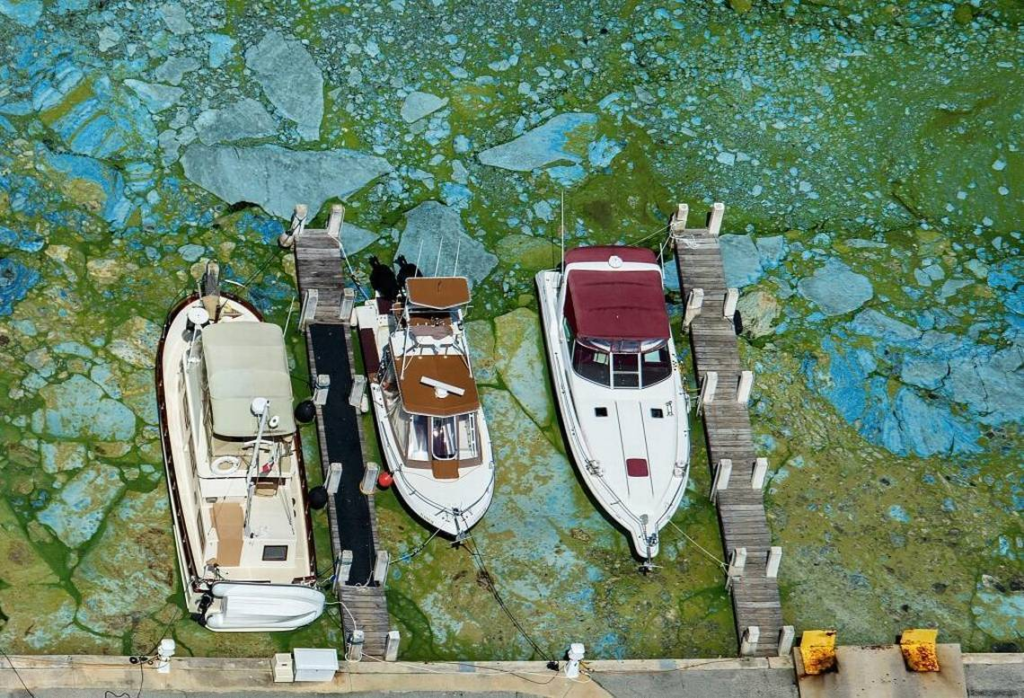Building Trust and Creating Change at the Local Level
February 5, 2018
Over the past year, much discussion has been directed towards the relationships that the general public has with our institutions: academia, government, industry, etc. For environmentalists, the relationship between scientists and the public has increasingly become a cause for concern. The debate over climate change immediately springs to mind, but on both ends of the political spectrum there is growing distrust of scientists with respect to the environment, food, and medicine. In 2014, a survey by the Pew Research Center found that 34 percent of Americans say science has had a negative impact on the environment – a minority of the population, but a significant increase from 2009 when the same question yielded 23 percent. People argue over the solution with suggestions such as: scientists need better public relations support, clearer jargon (e.g. global climate change vs global warming), or need to stop turning science into a political issue. But this trend is not unique to scientists. Over the past few decades, Americans have also developed cynical views towards the government. A similar Pew survey in 2015 found that only 19 percent of Americans say they can trust the government “always or most of the time”. “Draining the swamp” became a key promise during the 2016 presidential election, an election which many lamented was a “lose-lose” situation. So in a time when trust of scientists and the government is at a low – what are the ramifications for government scientists? On the one hand, there was immediate outcry at the proposed slashed budgets for the National Oceanic and Atmospheric Administration (NOAA) and the Environmental Protective Agency (EPA), with many citing the economic benefits of the agencies’ research. But U.S. Senator Jeff Flake’s “Wastebook” – a publication detailing the alleged misuse of federal money to fund “useless” research – is popular with many people who feel overtaxed and underserved. And coal miners, loggers, and farmers feel that EPA regulations are suffocating their already-suffering industries.
On Florida’s Treasure Coast (comprised of Indian River, St. Lucie, and Martin counties), public trust in environmentally-focused state agencies has worn especially thin. In the summer of 2016 an enormous toxic algal bloom choked the life out of the Indian River Lagoon (the most biodiverse lagoon ecosystem in the Northern Hemisphere), resulting in massive fish kills and a spike in emergency room patients in local hospitals.

Boats at Central Marine in Stuart, on June 25th 2016. Greg Lovett, Miami Herald.
Governor Rick Scott declared a state of emergency once the algae reached the coast’s beaches, but for many residents this only added insult to injury after years of arguing for measures that would prevent the onset and intensity of the blooms. A year later at the behest of concerned citizens, the American Civil Liberties Union (ACLU) of Florida published a report that found that state agencies did not release warnings to locals in a timely manner, and that “the methodology used to measure the toxicity of the water in the St. Lucie River and estuary was questionable and the results untrustworthy”. One local resident compared the actions of the state government as “ecoterrorism”. Another said that the “Board of Governors is clueless and owned by Big Sugar”. Clearly, the relationship between the public and state agencies is strained. As mentioned in the ACLU report, there are government scientists who are trying their hardest to do what is right for the people and the environment on the Treasure Coast, but their efforts are impeded by both higher-ups and general public sentiment that their motives or research is untrustworthy.
This is where my host organization, the Ocean Research Conservation Association (ORCA), enters the picture. A small non-profit started by Dr. Edie Widder in 2005 has become a major player in the fight to clean up the Indian River Lagoon (IRL). I believe ORCA has been successful because they have cultivated a relationship with the public that is independent of both state and federal agencies, and of the “ivory tower” of academia. Dr. Widder’s expertise is deep sea biology and engineering, but she started ORCA because she saw a need for science and technology to create solutions to the environmental hazards she was seeing right in her backyard every day. This message resonated with locals who have watched the lagoon deteriorate over a single generation. It also means that ORCA is focused solely on problem-solving science, so accusations of “research for the sake of research” won’t stick. And since ORCA is a non-profit that doesn’t report to a higher up in Tallahassee, no ulterior motive exists other than a desire to protect people and the environment. Finally, ORCA has made every effort to be transparent – the data from their water quality monitoring systems are accessible to anyone with an internet connection and are updated in real-time. This kind of transparency has prevented the difficulties that faced state scientists after last year’s bloom, because the public can see exactly when and where data was collected, and have immediate access to that data.
Over time, ORCA has added educational programs that promote restoration of the lagoon’s ecosystems, and has engaged the public through citizen science programs and volunteer work for young aspiring scientists. Now this isn’t to say that there are no other organizations doing similar and equally important work. The Harbor Branch Oceanographic Institute is an academic institution that conducts similar water quality monitoring, the Florida Oceanographic Society has hundreds of volunteers who help with ecosystem restoration and outreach, and the River Kidz organization encourages environmental action and advocacy with local children. But ORCA, at its core, is a handful of local scientists who came together in order to create the necessary change that they weren’t seeing in their lagoon – this is why the public trusts them.
“Dr. Edie Widder and ORCA are trusted names in Indian River Lagoon advocacy circles. She shines the light on agriculture, development, and “our own back yards” as far as what we are doing to destroy, and how we can help save our St Lucie River. Her colorful fertilizer-mapping visuals and the Kilroy monitoring program have been invaluable to both students and teachers, and give guidance for how applicable science can help create a better water future.”
Jacqui Thurlow-Lippisch, former mayor of Sewall’s Point FL
On a broader scale, ORCA is a case study of how environmentalists can push for change in an uncertain future. Large environmental non-governmental organizations reported record fundraising in the days following the presidential election. People want to protect the environment, and in the face of slashed budgets and rumors of gag orders doled out to federal and state scientists, environmental philanthropy is the next logical route of action. But we need to push for the funding of small, grassroots organizations because they are more effective per dollar than large environmental NGOs. Smaller local organizations like ORCA can focus on environmental issues unique to a community, and forge that relationship with the general public that is proving a struggle for other institutions and agencies. Whether I end up working for a small environmentally-focused non-profit in the future or not, I will leave ORCA understanding that in order to enact change, a relationship between conservationists and the public must be built on a foundation of trust.
About Victoria Ruddle
